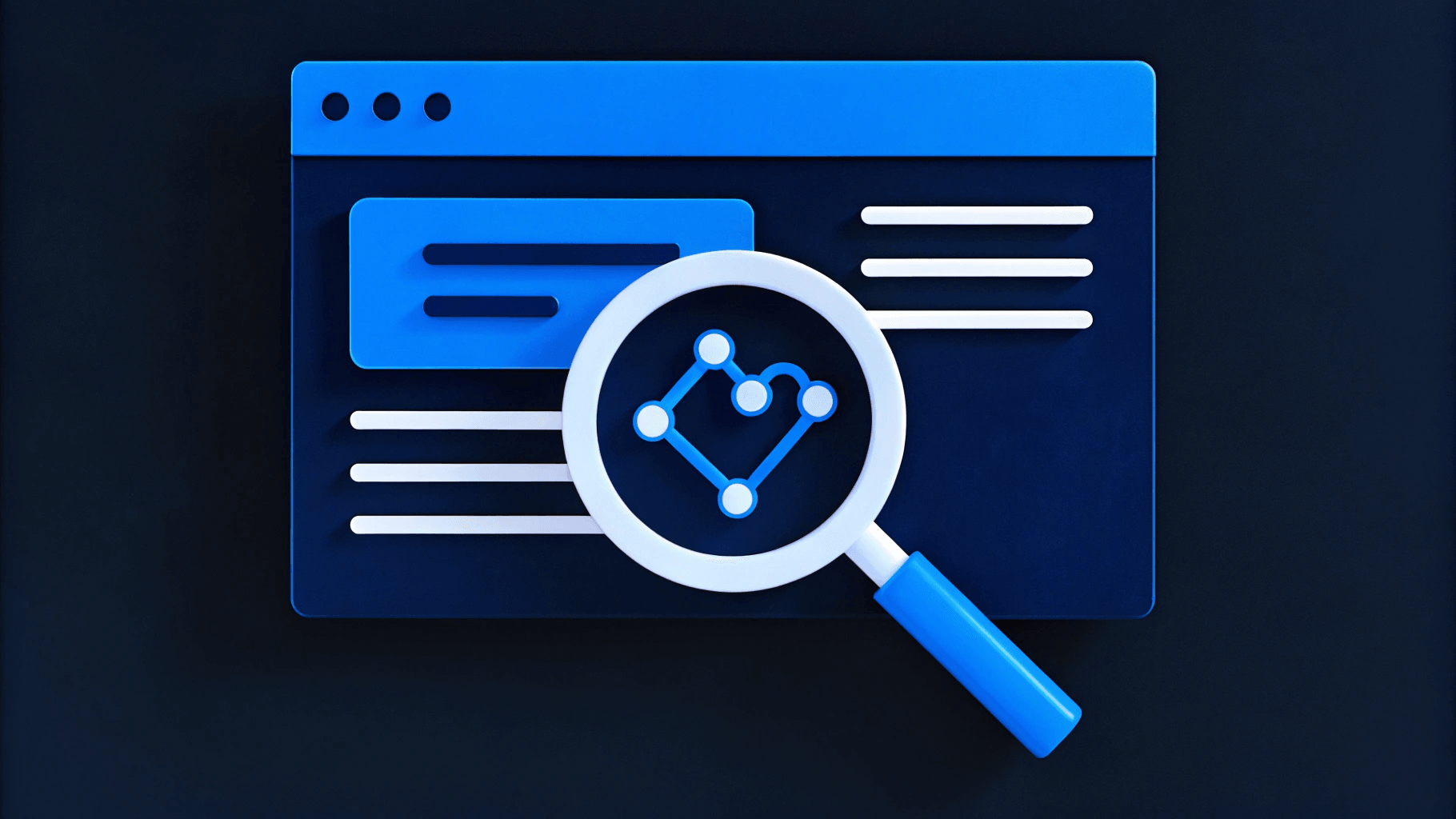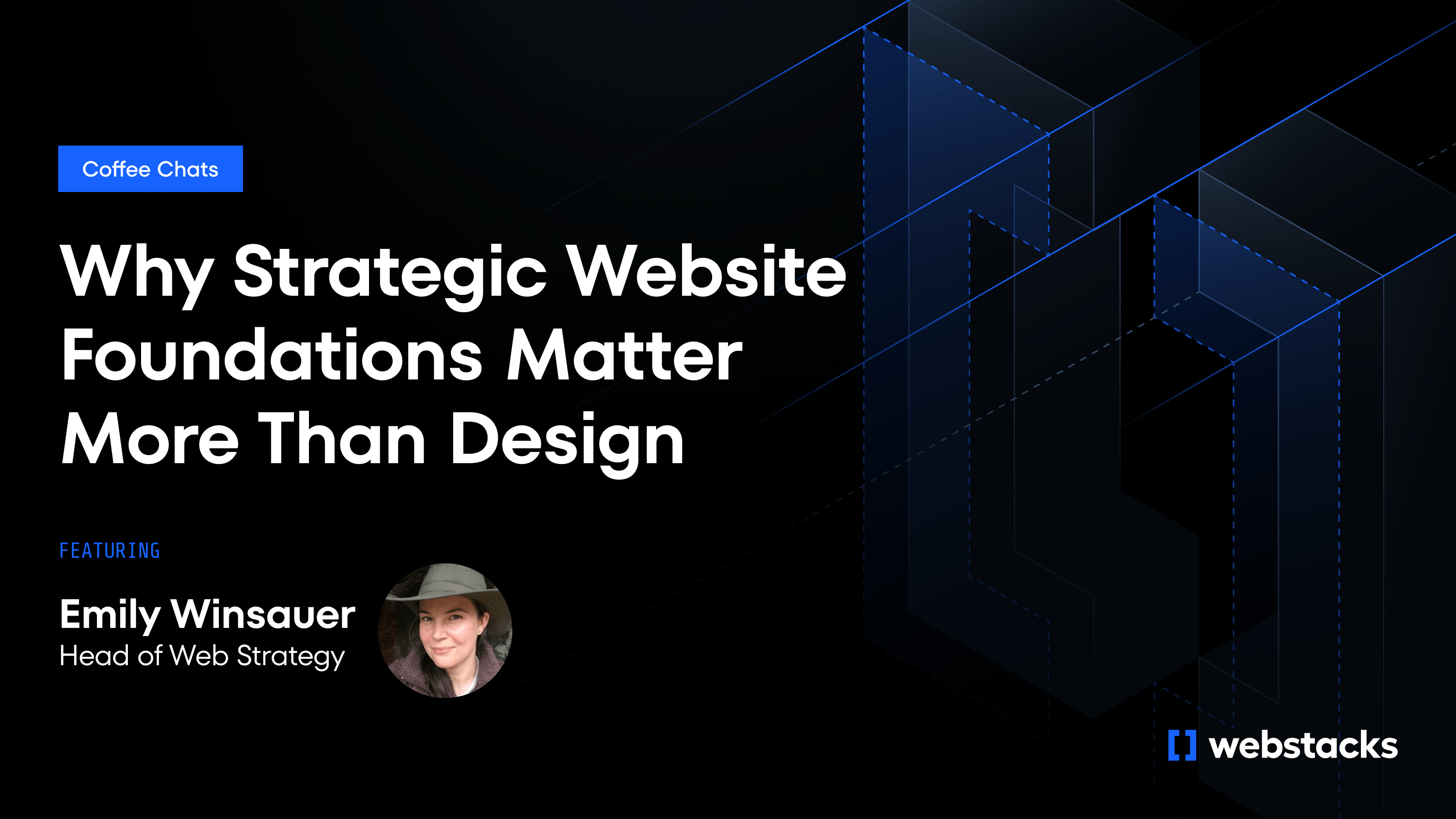Marketing teams can now generate a complete landing page in under an hour. AI tools draft the copy, create the visuals, and even suggest layout variations—all while you grab coffee. But here's the catch: when that AI-generated content hits a traditional monolithic CMS like WordPress, where everything lives in a tightly-coupled system, everything slows to a crawl. Traditional CMSs that view all content as massive blocks of HTML make it nearly impossible for teams to fully leverage the agility of AI and make targeted updates. We’ve seen this firsthand in enterprise migrations we’ve led at Webstacks—where AI potential is bottlenecked by legacy architecture long before the creative work even starts.
The solution? Composable architectures with structured content models that give AI predictable fields, APIs that push changes everywhere simultaneously, and automated Git workflows. Instead of storing content in HTML soup, platforms like Sanity organize everything into clean, predictable data structures. This approach scales with machine-generated content because AI knows exactly where to find each field. No guesswork, no breakage, no delays.
This guide will walk you through building an AI-ready web stack that turns content updates from a week-long project into a same-day deployment.

Why Traditional & Drag-and-Drop Platforms Fall Short
Traditional CMSs weren't designed for AI automation. They were built in an era when humans manually updated content one page at a time, so their architecture reflects those slower, more predictable workflows. When AI tries to update hundreds of pages simultaneously or modify specific elements across your entire site, these legacy systems become the bottleneck. Here's why they create problems that composable systems solve:
Content Structure Problems
AI systems work best with predictable, structured data where every piece of content follows the same format. Traditional CMSs were designed for human editors who could navigate messy, inconsistent data structures, but AI automation requires clean, organized information to function reliably.
- Monolithic HTML Storage: Traditional CMSs store content in HTML blobs within database fields. When AI needs to update a CTA button across 10,000 product pages, it must parse unstructured HTML, identify the button element, and hope the markup is consistent. This process fails frequently and requires manual fixes.
- Custom Field Chaos: Legacy platforms create dozens of different field structures across themes and plugins. AI services can't predict which field contains which data, making automation nearly impossible.
In hundreds of platform audits we’ve performed for companies moving from WordPress or Drupal to composable stacks, we’ve found the same problem: AI systems can’t predict where content lives because every plugin or theme introduces its own unpredictable field structures.
API Integration Barriers
Modern AI workflows require real-time connections between your content system and external AI services. Traditional CMSs were built before APIs became the standard, so they force AI integrations through unreliable middleware that creates more problems than it solves.
- Plugin Dependency Issues: Traditional systems require plugins for AI integration, each with different update cycles, security patches, and compatibility issues. A GPT integration plugin might break when the core system updates, halting all AI workflows.
- Limited Webhook Support: Legacy CMSs offer basic webhook functionality that doesn't scale with AI automation needs. Publishing a blog post might trigger one webhook, but AI systems need granular events for specific field changes.
Performance Under AI Load
AI operations can generate hundreds of content updates per minute, far exceeding what traditional CMSs were designed to handle. These systems treat every AI request like a human visitor, creating bottlenecks that slow down both your AI workflows and your actual website performance.
- Database Bottlenecks: Traditional platforms process AI requests through the same database that handles page rendering. High-volume AI operations slow down the entire site, creating poor user experiences.
- Caching Conflicts: Legacy caching breaks when AI systems update content frequently. Cache invalidation becomes complex when AI generates personalized content for different user segments.
How Composable Architecture Solves These Problems
The root cause of all these issues is architectural: traditional CMSs bundle everything together in ways that AI can't easily access or modify. Modern teams are solving this by breaking apart these monolithic systems into specialized components that work together through APIs.
The foundation of this approach is a headless CMS, which stores content separately from how it's displayed. Instead of content living inside theme files and plugins, it sits in a dedicated database that any frontend can access through clean APIs. Your content becomes available to your website, mobile apps, voice assistants, or any other channel without restructuring.
Composable architecture builds on this headless foundation by breaking down all your web systems into specialized services. This approach follows MACH principles: Microservices, API-first, Cloud-native, and Headless. Each component handles one function exceptionally well, and AI can integrate with each piece independently without breaking others.
Structured Content Models
Composable systems organize content with explicit schemas. A product in these systems is a structured object with defined fields: name, price, description, and images. Content items connect through relationships, like products to categories or authors to articles.
AI works best with this structured approach. Rather than struggling to extract information from HTML, AI directly queries specific fields. Validation rules maintain data quality, and the consistent JSON format integrates smoothly with any AI service.
This is why, in our own migrations, we pair headless CMS adoption with strict content modeling standards from day one. Whether we’re building for a SaaS brand like Freshworks or a global e-commerce team, the structure is never left to chance—because without it, AI falls apart under scale.
API-First Everything
APIs drive all interactions in a composable stack. Content updates trigger webhooks that activate AI workflows. Publish a blog post, and AI automatically drafts social media captions. Update a product price, and the change appears across all channels instantly.
GraphQL and REST endpoints distribute your content everywhere. Your website, mobile app, voice assistant, and AR experience all pull from the same data source. Adding new channels requires no content model changes as the API stays consistent.
Future-Proofing & Channel Flexibility
New devices, such as smartwatches, car dashboards, and VR headsets, appear constantly. A composable stack adapts without rebuilding. You simply add an endpoint, map your data, and launch on the new platform.
This approach also lets you swap individual services as needed. Replace your search engine from Algolia to Typesense. Switch image processing from Cloudinary to Imgix. Your core architecture remains stable while individual components evolve.
Security & Compliance Control
Composable systems give you precise control over data flows. You direct personal information away from third-party AI services, deploy sensitive processing on your own servers, and maintain complete audit trails of AI interactions.
This control becomes more valuable as AI regulations develop. Your architecture adapts to new requirements without major rebuilds. You can implement privacy techniques like differential privacy or federated learning exactly where needed.

What to Look for in an AI-Ready Headless CMS
Not all headless systems handle AI equally well. When evaluating platforms for AI integration, prioritize these capabilities that enable reliable automation and scaling:
Real-Time Content Distribution
Your headless CMS should update content instantly across all channels without delays or caching issues. AI-generated changes need to appear simultaneously on your website, mobile app, and email campaigns. Look for systems with live content APIs and instant propagation rather than batch processing.
Granular Content Querying
AI works best when it can request exactly the data it needs. Your CMS should offer precise query capabilities that let AI fetch specific fields like headlines and CTA text without pulling entire page objects. This reduces processing time, costs, and the chance of errors when AI only needs to work with targeted content pieces.
Structured Field-Level Updates
Choose platforms that allow AI to modify individual fields without affecting surrounding content. When AI updates product prices across thousands of items, it should leave manually crafted descriptions and images untouched. Field-level mutation capabilities prevent AI automation from accidentally overwriting human work.
Built-In AI Integration Support
The best headless CMSs include native AI tools that respect your content model structure. Look for platforms that offer AI assistance directly in the editing interface, allowing content teams to adjust tone, expand copy, or generate alternatives without leaving the system or breaking schema validation.
Flexible Plugin Architecture
Your CMS should support modern AI integrations through well-designed plugin systems. Unlike legacy platforms where plugins create dependencies and conflicts, look for systems where AI extensions access the same APIs as the core platform, ensuring consistent performance and security.
Advanced Webhook Systems
AI automation requires granular event triggers. Your headless CMS should offer comprehensive webhook functionality that responds to specific field changes, user actions, or scheduled events. Basic "content published" webhooks aren't sufficient for sophisticated AI workflows that need precise triggers.
Multi-Environment Testing
Choose platforms that let you test AI-generated content in staging environments before production deployment. This capability allows you to experiment with AI tools, validate content quality, and ensure AI automation works correctly without risking live content or user experiences.
For example, in our work designing multi-environment pipelines, we build staging setups where AI-generated changes can be tested, validated, and signed off—before they ever touch production. This protects brand integrity while still delivering the speed AI promises.
Role-Based AI Access Controls
Your CMS should allow granular permissions for AI services. Marketing AI tools might update copy, while inventory AI systems handle pricing and availability. Look for platforms that let you configure which AI services can modify which content types, maintaining security and governance.
Transform Your Website from Static Asset to AI-Powered Growth Engine
Generative AI is no longer the future—it’s the present. But without an architecture that can keep up, every AI breakthrough becomes another bottleneck.
We’ve spent years helping enterprise teams make this shift—from plugin-laden legacy platforms to composable stacks designed for speed, scale, and AI integration. Along the way, we’ve built migration patterns, workflow templates, and governance models that let teams skip the growing pains and start shipping faster from day one.
If your team is ready to move from “page of the week” to “experiment of the hour,” now is the time to act. The companies making this leap today will own the personalization, iteration, and conversion gains tomorrow.
Book a free stack audit with Webstacks, and see how an AI-ready architecture can turn your website into a competitive advantage.




